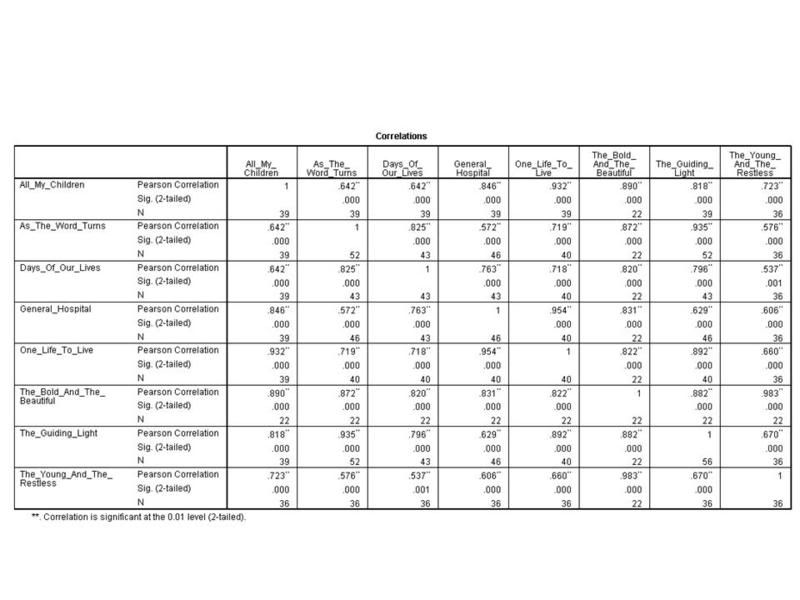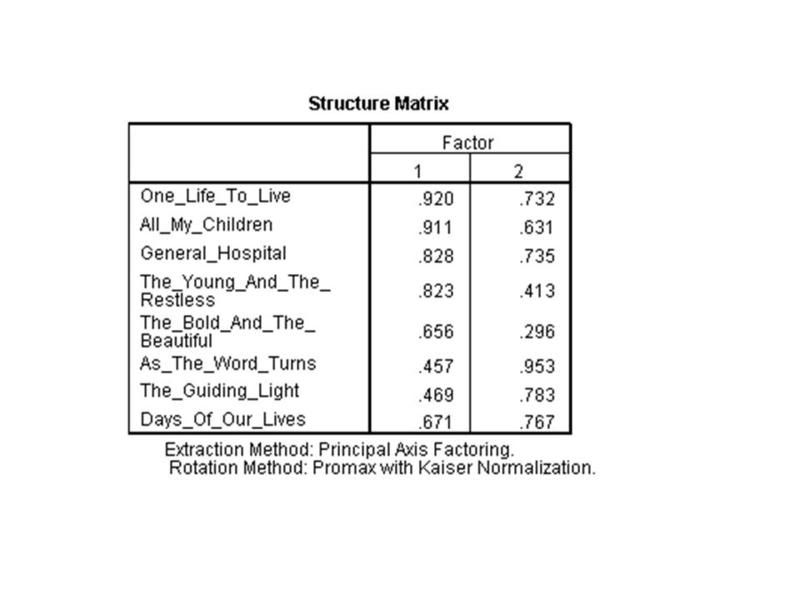Are there some soaps whose rise-and-fall depends more on others?
To answer that, I did two things.
The first table here (sorry for the resolution, but it is an SPSS export) shows the simple ratings correlations (from 1952-2007 seasons, where available) for the eight remaining US daytime soaps. That is a lot of numbers, but it says that, on average, the trajectories of soaps ARE correlated. (I could go into so much technical detail, and estimate these so much more precisely...but this is good for a bird's eye view). What you'll also see, though, is that some trajectories are more correlated than others.
So, the second table does a factor analysis on the trajectory correlations. (This is something called a T-technique factor analysis). And this surprised me, because two distinct trajectory groups emerged. (They're not THAT distinct...the two trajectories are correlated about 0.6). I thought, then, these groups would be sorted by network, right? In other words, we'd see that the ABC soaps travel in lockstep, the CBS soaps travel in lockstep...and who knows where Days would fall?
It turns out that is not what happened. The ABC soaps and Y&R/B&B represent one group, and Days + P&G soaps represent another group. (You can see this by examining the "structure" coefficients...ABC plus Y&R/B&B have their highest structure loadings on the first factor, Days + P&G have their highest structure loadings on Factor 2).
Could these be the "winner" and "loser" trajectories?
Pondering the results, I think these different trajectory groupings reflect the fact that (long-run) P&G and Days have experienced more overall decline (from their origins) than ABC/Y&R-B&B. In other words, I suspect that the soaps have been split out by how hard they have fallen.
As a final note...the fact that the two trajectory groupings are correlated 0.6 means that everyone is falling :-). It's not like any soap is immune. But it DOES suggest, from a process perspective, that the three soaps that are on the docket for most immediate cancellation (P&G and Days) ARE more similar in terms of their ratings loss functions than the other soaps. Maybe there is method to all this cancellation talk?



No comments:
Post a Comment